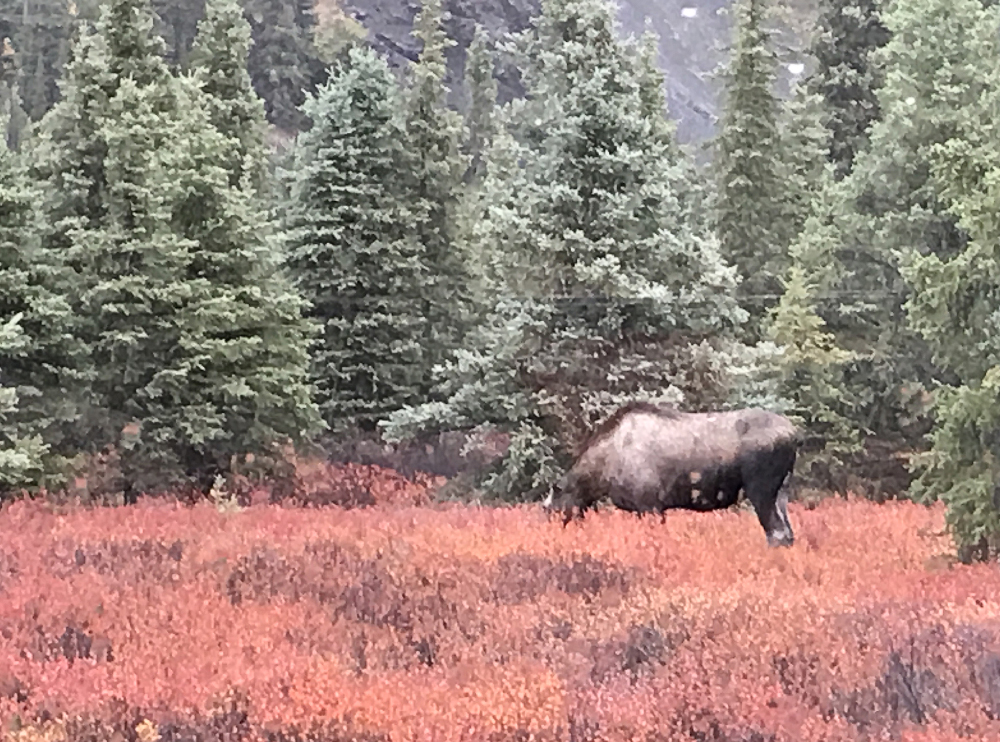
Welcome aboard the Trains–Special Interest Tours 2024 Alaska by Rail adventure. Please join us as we travel on the Alaska Railroad for 9 days from Sept. 8 to 17, heading south from Fairbanks to Anchorage, Alaska.
Today it was time to encounter the Great One — Denali — the tallest mountain peak in North America. Standing 20,310 feet above sea level, Denali does not even make the list of the top 100 tallest peaks in the world. Forget that! Denali is one big impressive mountain. But more so for America, its cultural story rooted deep in the lore of Alaska’s native peoples, making Denali a special and revered geographic monument.
Denali, the mountain, stands in Denali National Park and Preserve, a 9,492 square mile reserve in central Alaska. Its land size exceeds that of New Jersey. In 2022, the U.S. Park Service reported 427,562 people visited the park and spent $475 million to do so. President Wilson established the park on Feb. 26, 1917 as McKinley National Park. It was renamed on Dec. 2, 1980 to Denali, reflecting the native cultural name.
About here is where I had planned to regale you with descriptive language telling of the Great One’s natural beauty. That is, however, not possible — our group did not see Denali on our journey into the park. Clouds covered the mountains for most of the day, sending rain and, at the higher elevations, snow down onto the landscape. While it would have been nice to see the peak, what we did discover in the park more than made up for it.
Denali National Park is a rare intact natural ecosystem, meaning that the National Park Service has eliminated or severely limited human interference with the wildlife and the environment they live in within the park. Special guided bus tours take a limited number of visitors about 40 miles into the park daily from mid-May to mid-September. The mission: Learn from an experienced naturalist about the ecosystem and observe wildlife in an unobtrusive manner. The story of Denali’s ecosystem is as spectacular as the scenery passing by the bus windows — STOP! Moose on the road! And just like that two female moose darted from the roadside cover of some willow bushes, crossed in front of our bus, and started climbing the steep ridge on the other side of the road. About 20 miles later, we stopped to watch a moose cow and her 400-pound calf munching through a clearing among the spruce trees about 50 yards off the road. We did not disturb them other than to observe their dining habits — Denali’s wildlife in its natural habitat.
There is a train twist to all this nature. Park Road, on which we traveled, reaches 94 miles into the park from the Alaska Railroad Denali station. The road, graded in the 1910s, was placed to give residents of Kantishna, a tiny mining town, an access route to the railroad, the principal means of transportation into and out of the greater region at the time.
Even a short trek into Denali makes you realize how beautiful the wilderness is and how fortunate it is to have such places in the United States.
Day 4 — We will be boarding the southbound Alaska Railroad Denali Star and continuing our trek toward Anchorage. Lunch will be served on the train. Prepare for another culinary update from the dining section.









